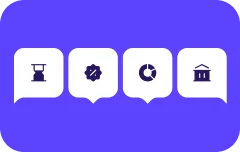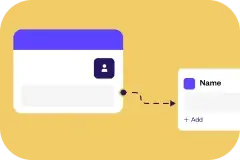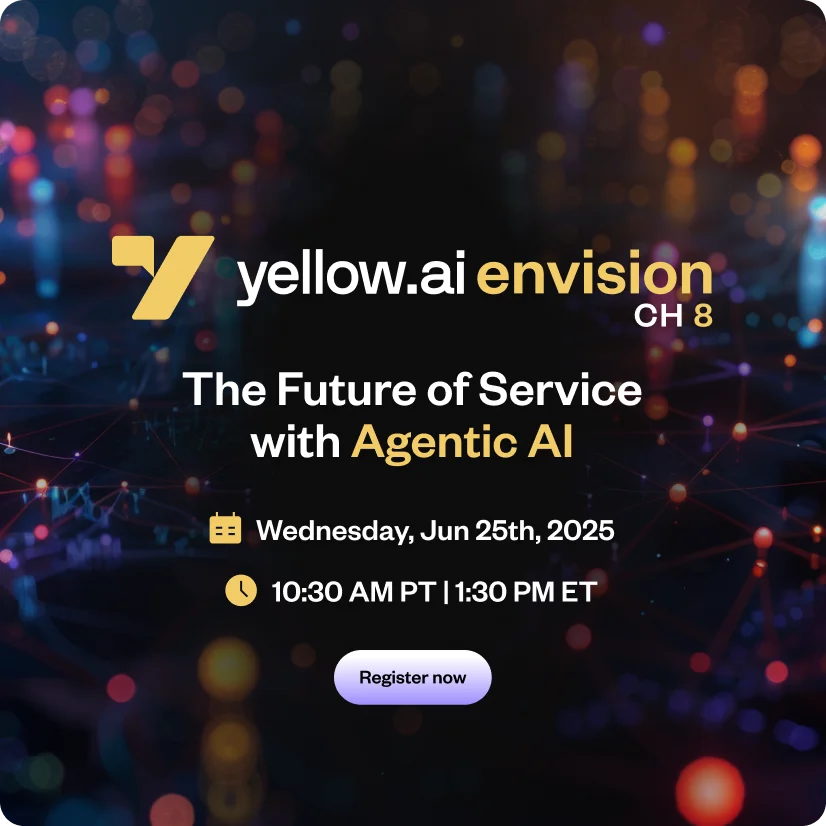The evolution of business in the digital age sees a notable hero: Lead Generation Chatbots. This article offers a comprehensive understanding of the current relevance of AI chatbots in reshaping how businesses engage with prospects. From understanding the fundamentals of AI chatbots and modern lead generation to the distinct benefits and a simplified guide to deploying one without coding, we cover it all. As 2023 unfolds, join us in exploring how AI chatbots are redefining the standards of business engagements and lead acquisition.
The digital terrain of 2023 presents businesses with a challenge: finding innovative yet effective lead-generation strategies. Businesses leveraging AI chatbots see an uptick in engagement rates, highlighting the growing importance of these digital assistants.
In the race to acquire and retain customers, AI chatbots have steadily become the frontrunners. They’re not the future; they’re the present, shaping contemporary business strategies and delivering tangible results. As we venture deeper into this article, we’ll uncover why chatbots have become an essential tool for businesses and how they are charting a new course for lead generation in this digital decade.
Related must-reads:
- How to create a chatbot – Best practices to follow in 2023
- Future of Chatbots: Key Trends to Watch in 2023!
- Enterprise Chatbot – A Guide for Enterprises [2023]
- Benefits of AI Chatbots for Businesses and Customers
What is a lead generation chatbot?
In the digital expanse, where real-time responses and personal touchpoints are paramount, lead-generation chatbots stand tall as invaluable allies for businesses. But what exactly is a lead-generation chatbot?
Simply put, a lead generation chatbot is a specialized digital assistant designed to identify and engage potential customers. Whether driven by AI or predetermined rule sets, these chatbots excel in collecting pertinent contact details and piquing the interest of prospective clients. Their strength lies in blending marketing objectives with conversational finesse. Instead of presenting users with static forms or one-dimensional interfaces, chatbots offer dynamic interactions, reflecting a seamless integration of business objectives with real-time user engagement.
While rule-based chatbots have historically dominated the scene due to their predictability and structured approach, the recent advancements in AI technology have ushered in a new era. The introduction of cutting-edge language models like GPT-4 has revolutionized chatbot capabilities. These advanced AI models offer more than just scripted responses; they understand, adapt, and respond to user interactions, making the conversation flow as naturally as one with a human sales representative.
Benefits of using AI chatbots for lead generation
As the technological landscape evolves, businesses are constantly seeking tools that offer them a competitive edge. AI chatbots have emerged as one such formidable tool, bringing a paradigm shift in lead generation strategies. From tailoring unique user experiences to significantly bolstering conversion rates, the strengths of these virtual assistants are manifold.
Let’s explore the various benefits of integrating AI chatbots into your business strategy and see how they can be your secret weapon in the rapidly changing market.
- Personalized Customer Journeys
- Elevated user engagement
- Boosted conversion rates
- Swift real-time responses
- Cost-effective lead acquisition & hassle-free integration
1. Personalized Customer Journeys
Consumers seek instant solutions tailored specifically to their needs. Surprisingly, for many, the robotic nature of chatbots isn’t a deterrent. Salesforce has highlighted that a staggering 69% of consumers opt for chatbots primarily because of their ability to provide immediate answers. The brilliance of AI chatbots lies in their ability to process user data in real-time, offering bespoke responses and, consequently, enhancing user satisfaction.
2. Elevated user engagement
The inclination towards chatbot technology, especially among millennials, is undeniable. This tech-savvy generation appreciates self-service options and values instantaneous support. Industry stalwarts, from LinkedIn to Starbucks, have acknowledged this trend, embedding intelligent chat interfaces in their platforms.
A noteworthy statistic from Forbes showcases that while 60% of millennials have interacted with chatbots, a commendable 70% of them recount a positive experience. Through intuitive and instant engagements, chatbots fortify brand loyalty and user retention.
3. Boosted conversion rates
While delivering exemplary customer service is a priority, the associated costs can often be excessive. Enterprises globally spend a whopping $1.3 trillion annually addressing customer inquiries. However, the strategic deployment of chatbots can curtail these expenses by nearly 30%.
The MIT Technology report further accentuates the effectiveness of chatbots, stating that a vast 90% of businesses observed a marked enhancement in the speed of resolving complaints post-chatbot integration. By proactively addressing customer concerns and guiding their purchase journey, chatbots significantly amplify lead conversions.
4. Swift real-time responses
The age of waiting has long passed. Modern consumers expect and appreciate real-time interactions. AI chatbots, with their lightning-fast response rates, are primed to fulfill this very demand. The consistent year-on-year surge in chatbot interactions testifies to their growing relevance. Immediate replies not only foster trust but also subtly nudge the user closer to a purchase decision.
5. Cost-effective lead acquisition & hassle-free integration
Lead generation, though vital, can often strain financial resources. However, the incorporation of chatbots offers a two-fold advantage. First, it dramatically reduces the cost associated with acquiring leads. Second, with advancements in technology, creating and integrating chatbots has become a breeze. Platforms like Yellow.ai’s Dynamic Automation Platform have democratized chatbot deployment, enabling businesses, irrespective of their tech prowess, to harness the power of AI without diving deep into coding complexities.
How to use chatbots for lead generation?
Imagine engaging with potential customers, capturing vital data, and guiding prospects through their buyer journey seamlessly and in a personalized manner. That is precisely what chatbots bring to the table. As we delve into chatbot-assisted lead generation, let’s explore the key steps to help businesses elevate their customer engagement strategies and drive conversions.
AI chatbots act as round-the-clock virtual assistants, bolstering customer engagement and streamlining the lead-generation process. If you’re pondering the ways to harness the power of chatbots for your business, let’s break down some of the core steps:
Craft captivating chatbot interactions.
Make it conversational: 74% of online users prefer chatbots for straightforward inquiries. Strike a balance between professionalism and approachability, making users feel like they’re in a genuine conversation.
Collect and qualify: Chatbots excel in gathering critical customer insights. With 62% of users preferring bots over waiting for a human response, you can qualify leads efficiently, ensuring your sales team focuses on high-potential leads.
Harness personalization: AI chatbots utilize real-time user data, presenting personalized product suggestions and content. Remember, customers crave immediacy. A tailored response amplifies the chances of converting a prospect into a loyal customer.
Seamless tech integration
Ensure your chatbot aligns with your CRM and marketing platforms. Such integrations not only foster consistent messaging across touchpoints but also automate nurturing campaigns, delivering the correct information to potential leads at the opportune moment.
Creating a no-code lead-generation chatbot
For those who cringe at the thought of intricate coding, breathe easy. Modern platforms have simplified the chatbot creation process:
Define and design: Start with clarity. Understand the chatbot’s goals, its target demographic, and the intended lead-gen outcomes. This clarity will anchor your chatbot’s design.
Select the right platform: Choose platforms that simplify the chatbot creation process. Platforms such as Yellow.ai’s Dynamic Automation Platform make it easy to design AI-driven chatbots without wading through complex code, perfectly suiting businesses of all technological expertise levels.
Know your audience: Dig into analytics. A clear understanding of your audience’s desires and pain points means your chatbot can address them effectively. Data shows that 52% of customers prefer to message rather than call customer service. By identifying the user persona, businesses can tailor chatbot interactions to meet the needs of their ideal customers.
Lead qualification: Implement AI-driven mechanisms that sift through and categorize leads based on specific criteria, ensuring your sales strategy is laser-focused.
Value-driven content: Engage potential leads by sharing insightful content, establishing your brand as a trusted authority in your domain.
Mobile optimization: Given the ubiquity of mobile internet access, ensuring your chatbot offers a seamless mobile experience is non-negotiable.
Iterative improvements: Regularly refine based on user feedback. Continuous iteration ensures your chatbot remains effective and meets evolving user needs.
Summing up the lead generation chatbot guide
As we navigate an increasingly digital business landscape, AI chatbots stand out as invaluable allies in the quest for enhanced lead generation. Their capacity to offer on-the-fly personalized responses, coupled with their operational efficiency, makes them indispensable.
For businesses aiming to stay ahead of the curve, employing platforms like Yellow.ai’s Dynamic Automation Platform can be a game-changer. If you’re keen to explore the transformative potential of chatbots for your business, book a demo with Yellow.ai and embark on your chatbot-powered journey.
Frequently asked questions (FAQs)
How can AI chatbots improve lead generation and conversion rates?
AI chatbots can improve lead generation and conversion rates by providing instant responses, personalized interactions, and lead qualification mechanisms. Chatbots create meaningful connections with potential customers by engaging prospects in real-time, delivering valuable content, and nurturing leads, leading to higher conversion rates and improved customer experiences.
Are AI chatbots capable of handling complex lead qualification processes?
AI chatbots are capable of handling complex lead qualification processes. They can ask targeted questions to understand customer needs and preferences, categorizing leads based on predefined criteria. With AI-powered lead qualification mechanisms, businesses can efficiently identify high-potential leads and optimize their sales efforts.
What are the best practices for implementing AI chatbots in lead-generation strategies?
The best practices for implementing AI chatbots in lead generation strategies include designing engaging chatbot experiences, providing personalized interactions, integrating with CRM and marketing systems, and leveraging omnichannel support. It’s crucial to monitor and analyze performance, continuously test and iterate, and offer seamless human escalation when required.
What is an example of a lead generation chatbot?
An example of a lead generation chatbot is a virtual assistant on a company’s website that engages with visitors, offers personalized product recommendations, collects contact information, and guides prospects through the lead generation process. Such chatbots are designed to deliver exceptional customer experiences and boost lead conversion.
How do chatbots qualify leads?
Chatbots qualify leads by asking relevant questions to understand the prospect’s needs and preferences. They categorize leads based on predefined criteria like budget, purchase intent, or industry. By capturing vital data and analyzing customer interactions, chatbots determine the quality of leads and prioritize follow-up actions.


















